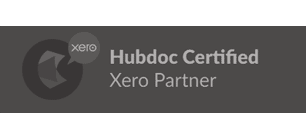What you need to know about Making Tax Digital for VAT
The Making Tax Digital scheme (MTD) is the Government’s big plan to make it easier for businesses to keep on top of their tax returns, avoid late payment fines, and generally improve efficiency. And from April 2019, this will include all VAT returns for those businesses whose turnover is above the current £85,000 threshold.
Digital VAT records
While 99% of business currently file their VAT return online, just 12% are filed using HMRC compatible software. This means the majority of businesses (87%) are manually entering their VAT information through the existing HMRC VAT portal. (Source: Chartered Institute of Taxation).
Under the new MTD system, businesses will be obligated to keep all VAT records digital, and submit all VAT information and data to HMRC through compatible software at least every three months. The exact software requirements have yet to be confirmed, but buying and implementing any new software is likely to incur additional costs for that 87% of businesses.
Once the software is in place, it will connect directly with HMRC systems through an Application Programming Interface (API). This will allow your business to comply with the new MTD regulations by keeping all your VAT records digital and creating a VAT return from your digitally stored records.
An end to manual records
Another major change in the new system will be the use of spreadsheets. Currently, accounts departments in businesses up and down the country use spreadsheets to make their VAT calculations, making it easy to make amendments and adjustments before filing the figures. With the new system, spreadsheets on their own will be classed as manual records.
This doesn’t mean to say your business cannot continue to use them, but compatible software will still need to be in place to allow your information to be submitted directly to HMRC. By continuing to keep your manual records, it means you’ll be doubling your workload as it will simply be a duplication of your HMRC submission.
The digital records you update will then create your VAT return by using the information you’ve submitted. So if you use spreadsheets, you’ll need to make big changes in the way you process your information.
Your next steps
Legislation for the new MTD VAT system begins on April 1st 2019, so there’s less than a year to go for your transition period to convert from manual returns to going fully digital. What you need to submit won’t be changing, only the way in which you do it, but by getting your business set up sooner, the more time you’ll have to get used to before it becomes a legal requirement.
To make the transition easier, there will be a ‘soft landing’ period between April 2019 and March 2020. It’s a period where no financial penalties will be incurred for any record keeping teething problems, but there must be a digital link between you and HMRC in place by April 1st 2019.
For any further information on Making Tax Digital for VAT, please get in touch with the H.M. Williams team today on 01752 334950 or email us on mail@hmwilliams.co.uk, and we’ll be happy to help.
Come and have a free meeting
-
Customer Service Award

-
Best UK Tax Award

-
Accredited by ACCA

-
Chartered Tax Advisors

-
Partners

-
Partners


